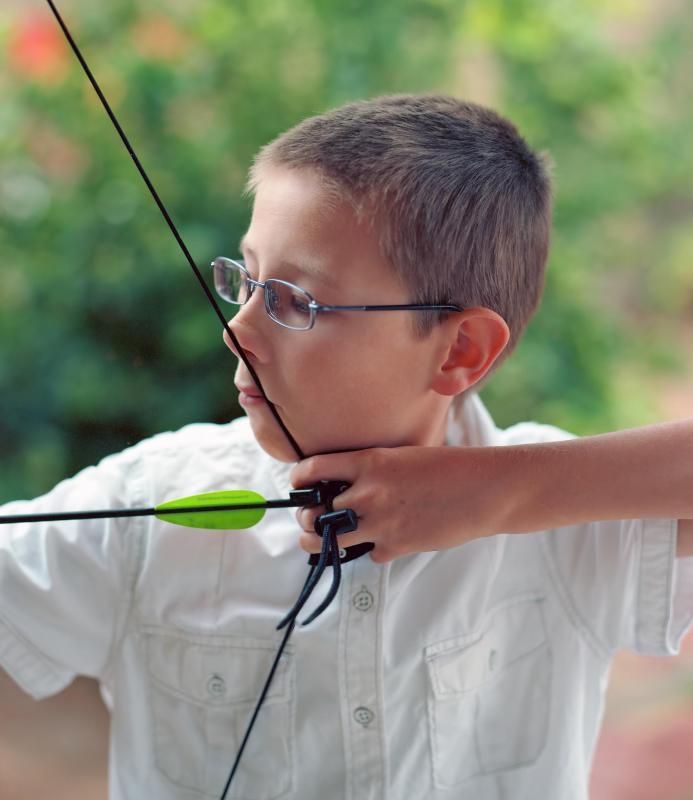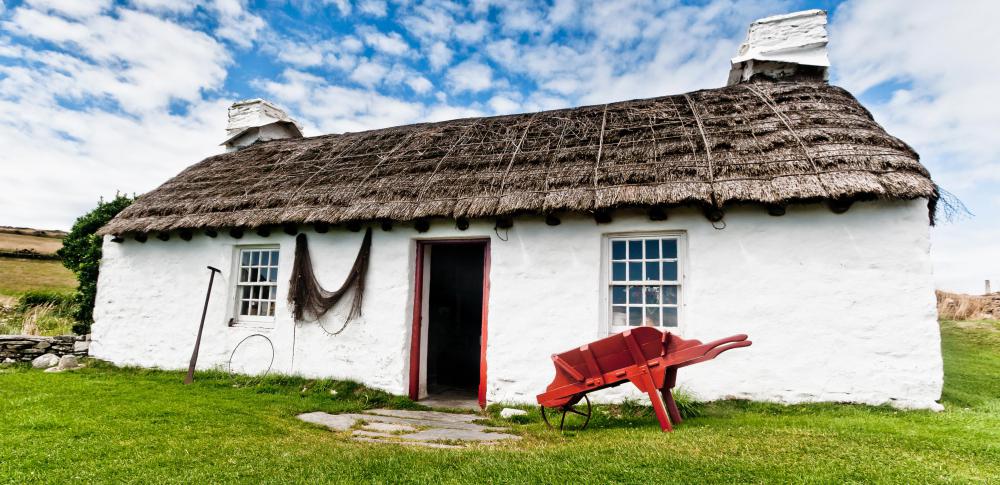At AllThingsNature, we're committed to delivering accurate, trustworthy information. Our expert-authored content is rigorously fact-checked and sourced from credible authorities. Discover how we uphold the highest standards in providing you with reliable knowledge.
What is Straw?
Straw consists of the dried stalks of plants, especially cereal grains. Although it is an agricultural byproduct, rather than a primary crop, it has a wide range of uses. Humans have been utilizing straw for thousands of years for everything from animal bedding to art, and it is produced in countries all over the world for a multitude of purposes. Consumers can purchase it or products made from it in all sorts of places, from feed stores to shops dedicated to high fashion designers.
Cereal grains are cultivated for their nutrient rich seeds, which are collected by cutting the grain once it has matured and threshing it to extract the usable seeds. Straw is the material left behind. Typically, the stalks are allowed to fully dry and then they are compacted into bales which can easily be transported to market. Straw may also be bundled into sheaves, especially if it is going to be woven or converted into thatching.

Around the house, straw can be used as a building material when mixed with earth and clay, and it has also been traditionally used as insulation in wood framed homes. It can also be used to create a thatched roof, and it can be woven into floor coverings and wall hangings. This material may also be braided into baskets and used to stuff bedding and pillows.

Straw hats are common in many parts of the world, and the fibers can also be used to make protective garments, or historically to line armor and harnesses for working animals. People have also traditionally used dried stalks as animal bedding, to keep hoofed animals from coming into direct contact with the floor, and to insulate stables. Higher grades can be used to supplement the diet of animals, especially in the winter when forage may not be readily available.

In erosion control, straw can be very useful. Mats can be stretched across areas prone to slides to help the soil stay in place, or it can be scattered on a muddy area to prevent topsoil runoff. Bales of straw have also been used as barriers to prevent flooding, or as temporary fences for livestock. A sturdy bale also makes a great archery target, or the stalks can be used to stuff figures for weapons practice, or for use as scarecrows. Many people have also traditionally made decorative crafts with straw, some of which can be quite beautiful.
Frequently Asked Questions
What exactly is straw and how is it different from hay?
Straw is the dry stalk of cereal plants left over after the grain and chaff have been removed. Unlike hay, which is harvested before the seed heads develop and is used as animal fodder due to its high nutritional content, straw is primarily used for bedding and as a soil amendment. Straw is lower in nutritional value, making it unsuitable for feed but excellent for other agricultural uses.
Can animals eat straw, and if so, which animals typically do?
While straw is not a primary food source due to its low nutritional value, some farm animals like cattle and goats may eat it as roughage to aid digestion. However, it's important to provide a balanced diet with more nutritious feed. Straw is more commonly used for bedding, providing a dry, comfortable place for animals to rest.
How is straw used in agriculture and gardening?
In agriculture, straw serves multiple purposes. It's used as bedding for livestock, providing a comfortable and absorbent layer. In gardening, straw is an excellent mulch; it retains soil moisture, suppresses weeds, and adds organic matter to the soil as it decomposes. Straw bale gardening is also a method where plants are grown directly in straw bales, which act as both container and growing medium.
Is straw environmentally friendly and sustainable?
Straw is considered an environmentally friendly and sustainable resource. It's a byproduct of cereal grain production, so using it contributes to waste reduction. As a natural material, it's biodegradable and can improve soil health when used as mulch or in compost. Additionally, straw bale construction is gaining popularity as a sustainable building method with excellent insulation properties.
What are the benefits of using straw as animal bedding?
Straw is highly absorbent, making it ideal for animal bedding as it keeps the area dry and reduces the risk of moisture-related health issues. It provides insulation against cold, is relatively dust-free, and is comfortable for animals to lie on. After use, it can be composted, returning nutrients to the soil and promoting a circular agricultural economy.
Are there any drawbacks to using straw in agricultural practices?
While straw is beneficial in many ways, there are some drawbacks. If not managed properly, it can harbor pests and mold, which can negatively impact animal health. Additionally, transporting straw can be costly due to its bulk, and if sourced from conventional farming, it may contain pesticide residues. Therefore, sourcing clean, high-quality straw is essential for safe use.
AS FEATURED ON:
AS FEATURED ON:













Discussion Comments
can people have an allergy to straw?
I live in the Coastal Bend in Texas (South) and have been told I cannot get straw here. Does anyone know where I can purchase a couple of bales? Thanks!
Post your comments